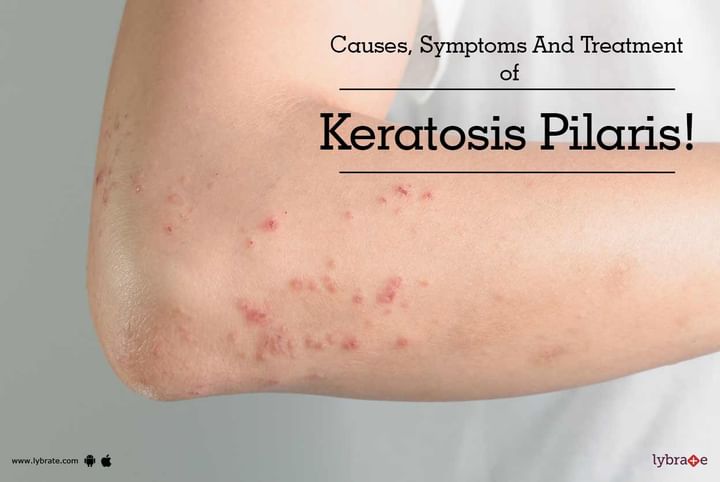Get the App
For Doctors
Login/Sign-up
Last Updated: Oct 23, 2019
BookMark
Report
Causes, Symptoms And Treatment of Keratosis Pilaris!
The skin has a protein called keratin that protects it from infections and other harmful toxins. For various reasons, mostly unknown, but likely genetic, there could be a build up of this keratin leading to small, light-colored, hard bumps under the skin that can feel like sandpaper. This condition is medically known as keratosis pilaris. These pillars of keratin block the hair follicles that open onto the surface of the skin, and when a number of follicles are blocked, it leads to dry, bumpy feeling. In common words, it is also referred to as chicken skin, chicken bumps, or goose bumps.
- Occurrence: The onset is usually in the first decade of life, continues to grow in number in teenagers (80%), and slowly subsides as they grow older (40% of adults). People with dry skin are more likely to have these bumps than people with oily skin. The most commonly affected areas include upper arms, thighs, buttocks and very rarely on the face.
- Cause: This is a genetic disorder, and the bumps are due to excessive formation and buildup of keratin due to faulty genes. There could be surplus skin formation under these follicles or hair follicles trapped under these bumps. There could be a small area of inflammation and redness around the bumps.
- Weather correlation: Keratosis pilaris is more common and evident during the winter months when the skin is normally drier than in summer months. Some people could have this condition lifelong, with only manifestation seen in winters and complete absence of bumps in the summer months.
- Symptoms: The condition is usually asymptomatic, except for the dryness, and does not cause itching or medical harm. The esthetic concern, especially if in upper arms, is the only concern. Some people could be affected by the hard, bumpy feeling of the skin. There are no long-term medical symptoms or harmful effects of this condition though.
- Treatment: No treatment is required; however, moisturizers may be required to prevent the bumps from drying up. In very severe cases, creams may be used to remove dead skin cells and to prevent plugged follicles. Alpha hydroxy acid, salicylic acid, or lactic acid containing creams can be used to remove the dead skin cells. These also help moisturize the skin and reduce dryness. Vitamin A containing creams can be used to unplug the hair follicles. Avoid shaving and waxing.
- A word of caution though: These creams can cause itching and redness. Since this condition is prevalent in children, these creams need to be used only if absolutely essential and with medical prescriptions. The condition is harmless and self-limiting, so no treatment is mandatory. Patient education is of utmost importance in these cases. If you wish to discuss about any specific problem, you can consult a Dermatologist.



+1.svg)
